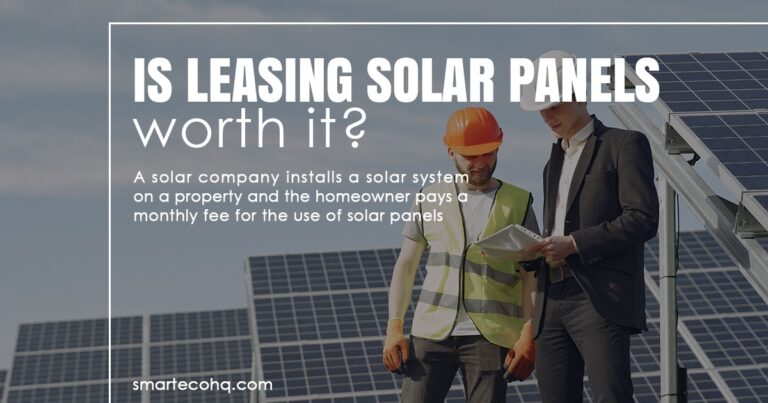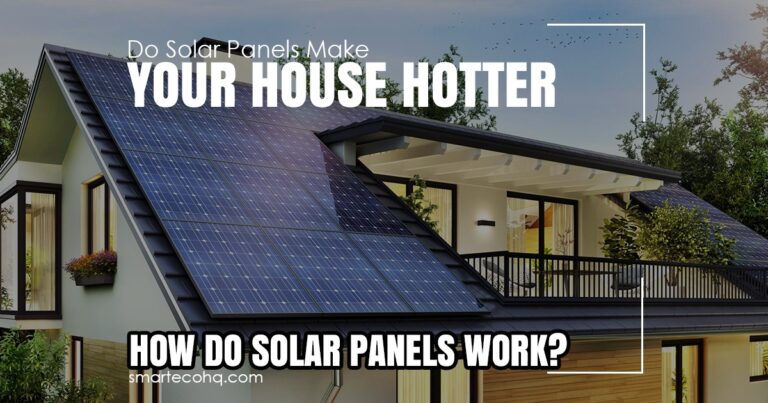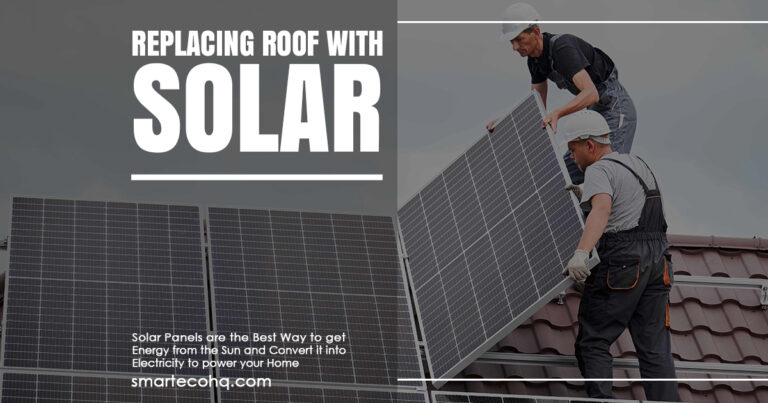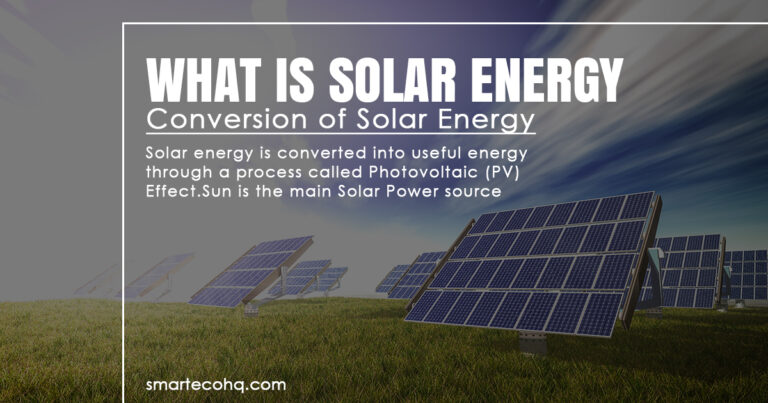Solar Arrays: Harnessing the Power of the Sun
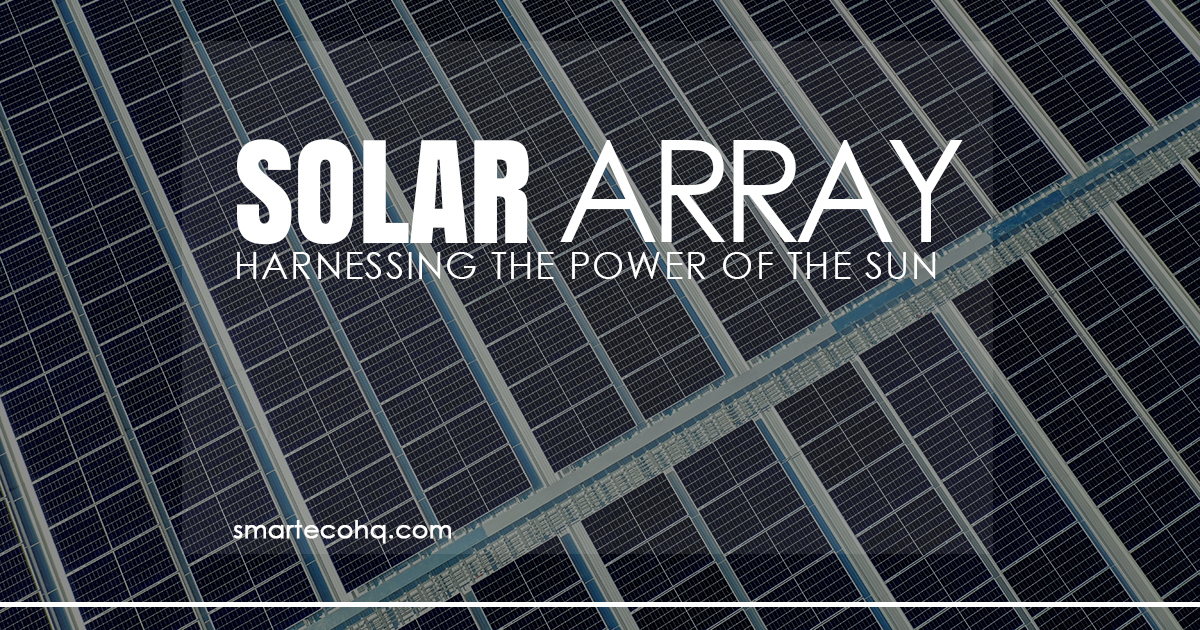
Discover the potential of solar arrays – groups of interconnected solar panels – to transform your energy consumption.
Solar Array?
A solar array is a cluster of photovoltaic (PV) panels that convert sunlight into electricity. A solar array can be mounted on a roof of a structure or on the floor. The size of a solar array depends on the amount of electricity required and the amount of accessible space.
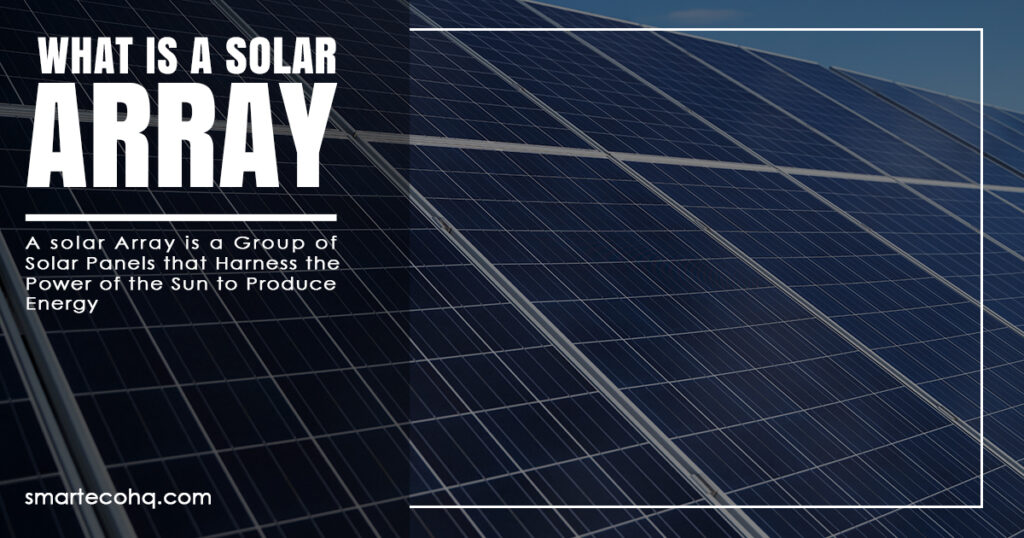
Solar Array vs. Solar Panel
The individual solar cells that comprise the solar array are the primary differentiator between solar arrays & solar panels. Arrays are made up of solar panels that work together to generate electricity. Panels are basic pieces, whereas arrays can be customized to meet your individual energy needs.
How Does a Solar Array Work?
Photovoltaic cells, which are made of silicon and other elements, make up solar panels. When sunlight strikes the solar panel, photovoltaic cells convert the sun’s energy into direct current (DC) electricity. DC electricity is subsequently converted by an inverter into AC or alternating current electricity, which is utilized for lighting homes and companies.
Types of Solar Array
There are various types of solar arrays, each having its own set of traits and advantages. The following are the various types of solar arrays:
Grid-Tied Solar Array:
A grid-tied solar array is linked to the local power grid, allowing excess energy to be supplied back to the grid for credit or cash. This is the most prevalent type of PV Solar Array and is perfect for homeowners as well as companies wishing to reduce their energy expenditures.
Off-Grid Solar Array:
An off-grid solar array is one that is not connected to the electrical grid and instead uses battery storage to store extra energy for usage at night or on cloudy days. This type of solar array is perfect for places where electrical service is not feasible.
Hybrid Solar Array:
A hybrid solar array integrates grid-connected and off-grid technologies, allowing power to be maintained in batteries while also connecting to the grid for backup power.
Each type of solar array has benefits as well as drawbacks, and the type of solar array chosen will be determined by considerations such as energy requirements, location, and budget.
Components of a Solar Array
A solar array is made up of many parts, such as batteries, inverters, and solar panels.
Solar Power Panels
The most vital part of a solar array is its solar panels. They consist of photovoltaic cells, which use sunlight to create DC electricity.
The inverters
Inverters convert direct current (DC) electricity into alternating current (AC) electricity, which can then be used to power buildings or other structures.
- Batteries
Batteries can be omitted from a solar array. The extra energy generated by the solar panels is stored for use when there isn’t sunlight.
- Benefits of a Solar Array
Installing a solar array has various advantages. Solar energy is, first and foremost, sustainable and environmentally friendly, which means it may be utilized continuously without depleting natural resources.
Solar energy is also clean and has no pollutants, which makes it an environmentally conscious energy source. Installing a solar array can also result in significant cost savings on power bills, and in some situations, extra electricity generated by the array can be leased and returned to the grid to save even more money.
Factors to Consider When Installing a Solar Array
There are various aspects to consider before installing a solar array. These variables include the amount of sunshine received in the location, the size and direction of the solar array, and the amount of electric power required. It’s also critical to think about any local restrictions and permission requirements before building a solar array.
Maintenance and Care of a Solar Array
Although solar arrays are low-maintenance, they still require some attention to ensure maximum efficiency. This includes maintaining the solar panels on a regular basis to remove any debris or grime, as well as monitoring the operation of the solar array to identify any problems that may occur.
Future of Solar Arrays
With technological improvements and rising demand for sustainable energy, the future of solar arrays seems bright. Here are some probable advancements for solar panels in the future:
Greater Efficiency:
Solar panels’ efficiency is always being improved by researchers in order to convert more of the sun’s energy into useful electricity. Smaller, more reasonably priced solar arrays that may generate more electricity in less space may result from this.
Energy Storage:
With the advancement of energy storage technologies like batteries, solar arrays are now able to store excess electricity for use when the sun isn’t shining. By doing this, solar energy would become more dependable and less dependent on the weather.
Integrated Design:
Rather than being installed as an afterthought, solar arrays may one day be included in the plans for infrastructure and buildings. This might result in solar panels that are more attractive and effective.
Greater Accessibility:
As solar energy becomes more popular, it is anticipated that the price of solar panels and their installation will drop. This would increase the number of people and businesses that can use solar power.
Microgrids:
Local energy systems that can function independently of the main power grid are known as “microgrids.” Microgrids could eventually be powered by solar arrays, giving communities dependable and sustainable energy.
Conclusion
Solar arrays are an affordable and environmentally beneficial alternative to existing energy sources. We can lessen our dependence on fossil fuels and establish a sustainable energy future by harnessing the power of the sun. If you’re thinking about installing a solar array, do your homework and work with a professional contractor to ensure that your solar array is planned and installed to match your energy demands.
FAQs
Q: What is a solar array?
A: A solar array refers to a collection of interconnected solar panels that work together to harness sunlight and convert it into electricity. It is a system designed to capture and utilize the power of the sun.
Q: How do solar arrays work?
A: Solar arrays work by utilizing the photovoltaic effect. The solar panels within the array consist of solar cells that absorb sunlight. These cells convert the sunlight into direct current (DC) electricity, which is then converted into usable alternating current (AC) electricity through an inverter. The AC electricity can be used to power homes, businesses, or stored in batteries for later use.
3. Are solar arrays suitable for my home?
Absolutely! Solar arrays are versatile and scalable. Whether you have a small rooftop or ample land, our experts can design a solar array that fits your energy needs.

